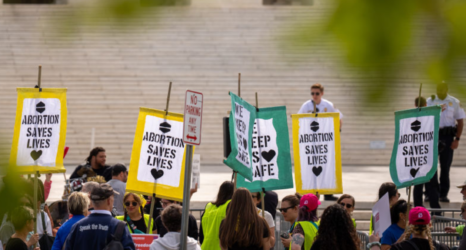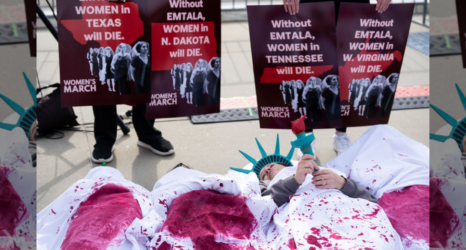Contrary to the preachings of anti-abortion zealots, a teenage girl’s chances of getting pregnant before she’s ready may have more to do with her race, region and economic status than with her values or “self control.” According to new statistics from the Centers for Disease Control (CDC), many teen pregnancies are clustered around the Bible Belt. Suddenly, fundamentalist Christian “chastity” doesn’t seem so hot at preserving a teen girl’s “delicate flower.”
The CDC reports that the rate of teen pregnancy—about 41.5 per thousand women between ages 15 and 19—fell in 2008. But the progress varied wildly in different corners of the country and across ethnic groups. While black and Latina teens had higher pregnancy rates overall, those rates rose highest in Southern states such as Alabama and Georgia. White teens had lower rates, but those similarly rose in the South and Southwest.
The figures recall another study from the department of reproductive irony. In a 2009 article in Reproductive Health, researchers linked the “religiosity” of a region to teen birth rates, suggesting that the more religious the surrounding community tends to be, the more likely that a girl there will have a baby before becoming an adult herself. After adjusting for social factors, including abortion rates, researchers speculated that “teens in more religious communities may be less likely to use contraception.” In contrast to family-values rhetoric, they said the results could indicate that …
… conservative religious communities in the U.S. are more successful in discouraging use of contraception among their teen community members than in discouraging sexual intercourse itself.
While the CDC’s data may affirm that theory, it also shows the complexity of gauging overlapping risks that lead to teen pregnancies. Whether you look at the data by region, race, income or education level, the takeaway is that girls need far more knowledge and power to make informed choices. This is especially true in communities of color, where teen pregnancy risks correlate strongly with social and economic barriers. On top of the usual pressures of adolescence, black and Latina girls often face structural problems like chronic poverty, alienation from the medical system and a lack of affordable, culturally-competent education and health resources in their communities.
Many reproductive rights activists see the statistics as a subtle vindication of their argument that reality-based education is key to controlling teen pregnancy. Leslie Kantor of Planned Parenthood pointed out in a statement last week:
This new CDC report makes it crystal clear that the teen birthrate is lower in states that provide students with comprehensive, evidence-based sex education.
Comprehensive sex ed has been demonized as a pro-promiscuity brainchild of liberals. But several studies have shown that the right’s alternative—programs that promote only abstinence and privilege heterosexual marriage as the only acceptable basis for a sexual relationship—is ineffective at curbing teen sexuality. Some programs, fraught with medical misinformation and outmoded gender stereotypes, may actively mislead children about how best to protect themselves (yet many have absorbed gobs of federal funding in past years).
It boggles the mind that, in 2010, the most controversial issue in sex education is whether more accurate information is a bad thing. So the culture war rages on at the expense of young people in the nation’s classrooms, as they struggle to deal with the reality of teen sex in communities that refuse to.
Photo from Flickr user Polina Sergeeva from Creative Commons 2.0.





